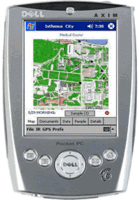MadCity Design Notes
Found this file while clearing my hard drive
11/4/04
MadCity Design Notes
Back to the days of designing the MadCity game, I felt that the most difficult part of designing a game is to have a holistic view about (1) the affordances and constraints of game engine, (2) the interpretation of curriculum standards, (3) local ecological issues, (4) how to motivate students and finally (5) conceiving a theme that incorporates these requirements as a coherent entity. Designing the game is not a waterfall process which goes top-down smoothly step by step. Instead, it is an iterative process that each revisiting of the above issues falsifies some assumptions and misunderstandings and reinforces certain beliefs. Each revisiting makes the goal more focused, the subject more perceivable and the obstacles more transparent.
Understanding the game and the game engine
Understanding the engine was not an easy process at all since the engine is designed based on some ideas and these ideas are not explicit in the annotation of the xml file. Another obstacle that impedes my way is that there is already a game over there. It is good in that it provides an example for a novice designer to understand what it can do. It is bad in that it constrain my imagination. I copied the content in the xml to excel files to study how Judy designed the game. More specifically how roles were designed, how scenario was developed and how players might perceive the game. It takes a long time to understand different “levels” about the game and, later, the game engine. Somehow I felt that the game was not quite appealing to me for some reasons. The three roles in the game were not evenly developed. She who played the MD might feel more engaged since she experienced more changes in the game in different time chunks. He who played the Government Official could feel bored since he got the same information all the time. The awareness of this potential design issues inform my understanding about the game and the game engine at the same time. If I were the player, would I be motivated by this design? How would I experience the game? What kind of understanding would I have after playing the game? As I tried to understand the game and the game engine, many questions puzzled me. Some of these questions are recurrent issues. I know that recurrent issues were more important since my mind put them in focus all the time. What makes these questions hard to answer was that I was not the player. The difference between experiencing the game by playing in the physical environment and playing the game with a button indoors makes a big difference in my understanding of the game and the game engine. The Boston Museum Game somehow inform my understanding about the game engine (is it a case of “transfer”? I think it is.) But experiencing the game as an observer is one thing and experiencing the game as a player is another. I struggled a lot in the process, worrying that the game I design would not work at all. Somehow my worry was a good thing because it forced me to find out possible problems in the game. It provided some hypotheses that I needed to justify. Designing the game should be like playing the game. The designer experience uncertainties and those uncertainties helped me frame key design issues. I did not realize these issues when I designed the game, of course. I would feel much more comfortable if I had known these before.
The interpretation of curriculum standards
Well, as a novice designer, I don’t even know the direction leading to the project. What made me struggle most was really the feeling of uncertainty. I did not know what I should do, where I should go and how I should respond. I really appreciate the routine discussion we had. They help me frame the whole project, making the goal more tangible and perceivable in many ways. Each talk we had pointed to some directions—practical and impracticable. They were all good since I knew that making mistakes informed how the system would not work. These talks helped me frame the major design issues. I realize now the importance of providing frameworks for the learners. The frameworks guide the direction, provide the lens and confine the boundary.
Not knowing that was a curriculum standard to follow could easily be a disaster since it provides the framework for curriculum design. Many professors would assume that we know, but the fact was that there were things that we certainly did not know. For example, I grew up in an educational environment in which we use standardized textbooks from the first year of my primary school till the end of my senior high school. Curriculum standard was one level above that and I did not know that (though I should have known that as a C&I doctoral student). In one of our talks I realized that I must understand the curriculum standards before designing something out of the blue. This understanding provided a key component in framing the game design. But I sensed there was still a tremendous gap not knowing what teachers were doing in a specific subject. How did they teach? What did students learn? What were the textbooks they used and how did their teachers make decisions in using those textbooks? These questions remain major questions in my mind and I think a designer should try something to bridge the gap.
Local ecological issues
Since the game engine was designed for environmental studies, I went for environmental issues. However, a Boston issue might not be a good Madison issue. Since I sensed that


